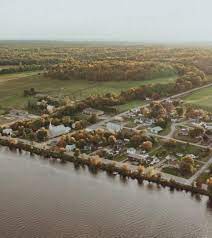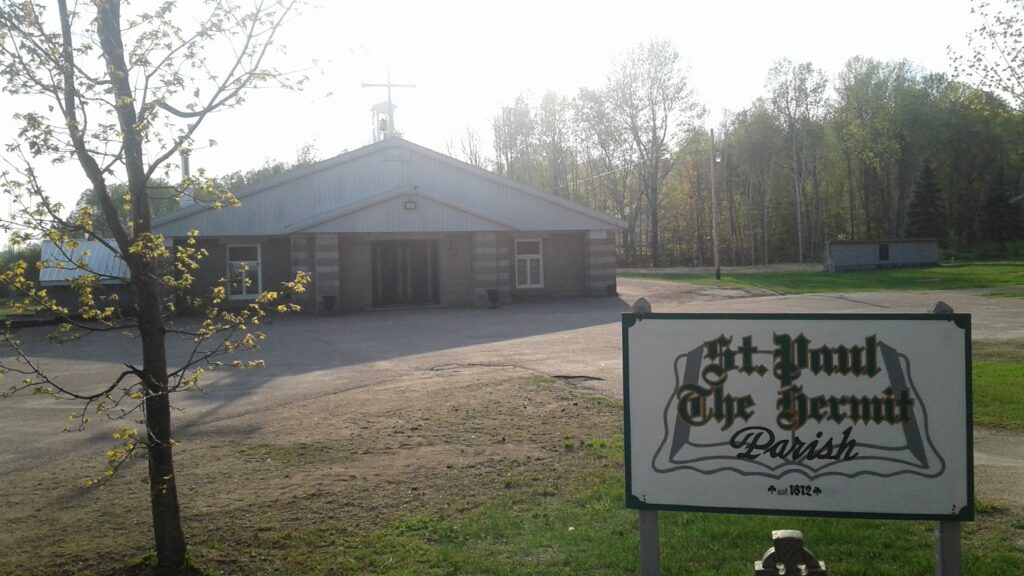
Located along the scenic shores of the Ottawa River and surrounded by tranquil lakes, Sheenboro, Quebec, seems like an unusual place to find shamrocks. Still, the little green clovers are everywhere—on the township’s welcome sign, its municipal website, and on the sign in front of St. Paul the Hermit Parish, established in 1872.
Exuding charm and a strong sense of heritage, with a population of 119 residents, visitors to this little corner of Ireland in Quebec will discover a historical treasure in the heart of the Canadian Shield, boasting deep roots in both the farming and lumber industries. It’s a town that hasn’t forgotten its Irish heritage, where memories of music, square dancing, and quilting are still as important a part of the community as they were when the first emigrants from places like Down, Kerry, and Tipperary first arrived.
Sheenboro is renowned for its picturesque lakes, fertile clay soil, and a predominantly Anglophone community (approximately 90% of residents are English-speaking), with deep Irish roots. To visitors, Sheenboro’s warm and welcoming village is reminiscent of Ireland’s storied landscapes and close-knit communities. The scenery, green fields bordered by forests, quiet country roads, and views of the Ottawa River, mirrors the pastoral charm of rural Ireland, making it easy to see why many Irish settlers chose to make Sheenboro their home.

The Township of Sheen
The first Irish settlers arrived in the Township of Sheen in the 1830s, squatting on unsurveyed land. By the early 1830s, 10-12 families emigrated to the Sheen area. The 1851 census provides a snapshot; there were 30 families in Sheen. The families were predominantly Irish Catholic, with 75% of the settlers of Irish descent. By 1851, 30 families had settled. Of the 18 new families in 1851, only two families had no relatives in the Township of Sheen.1
Migration was a family affair. The majority were Irish Catholic, usually single when they emigrated to Canada. They usually married other single Irish immigrants. All children born in 1851 were born in Canada.
The First Settlers
Around 1825, John Downey emigrated from Downpatrick, County Down, Ireland, to Quebec City, Canada, with his two brothers. It is believed that one of his brothers went west, while another went to Ontario, and that once apart, they never saw each other again.
Later in 1825, John Downey was in Bytown (now Ottawa), where he worked on the Rideau Canal, living in shantytowns with other labouring Irish immigrants who were “particularly unprepared for the rigours of work in the bush.”2
There, he met and married Jane Smith (an Irish immigrant, like John) in 1826. They had their first child, Michael, in 1826, and Edward in 1828, in Bytown, before moving to Goulbourn, where they remained for three years. They had two more children, John Jr. in 1830 and Thomas in 1832.
In 1833, John Downey moved to the Township of Sheen and settled on lot 25. The area had not yet been surveyed, so he and his family squatted on the land for about 14 years.3 John Downey is considered by many to be the first settler in Sheen, and Lac Downey is named for him.
Migration within the township was primarily an effort to establish “clusters” of family, relatives, and friends, enabling them to support one another. Like John Downey, most Irish emigrants to Canada were single and married other Irish emigrants once they arrived. Before long, many of John Downey’s relatives joined him in the Township of Sheen.
On the next stop along The Irish Mile, we’ll explore the landmarks that keep Sheenboro’s history alive—from rustic log chapels to old fur trading posts and storied forts.
- “The History of Sheenboro,” by Andrew Perrault, Betty Morris, and William Brennan.
- “Poverty, Distress, and Disease Labour and the Construction of the Rideau Canal, 1826-32:” by William N.T. Wylie
- “Sheen Township and the Agro-Forest Economy, 1830-1900,” by Sean Harold Darcy.
